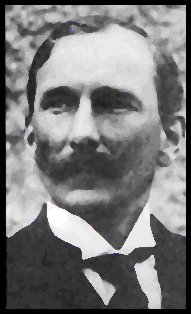
|
|
||||
Forestry Schools in
Upper Michigan; Then and Now . . .
By Louis J. Verme
|
Preface Michigan is indeed fortunate in having three top-notch universities providing instruction in the field of forestry and forest science. The rise of our forestry schools did not happen overnight, however, but experienced many problems along a sometimes tortuous journey to present status. It occurred to me that the early history of forestry training was not well known by the public at large, since in most cases the evolutionary facets were hidden away in musty library files. For this reason I decided to dig out the pertinent facts and present them in a succinct, interesting manner so as to enlighten the layman and professional forester alike. I did not intend to write a scholarly essay on the subject. Thus I beg the reader's indulgence for any inadvertent omissions or inaccuracy of salient information presented herein. I likewise apologize for some feeble attempts at humor which crept in from time to time, as when the subject was at risk of becoming too serious. Introduction Recently my wife and I toured the Blue Ridge Parkway in North Carolina, and stopped to visit the fabulous Biltmore Mansion, formerly the "home" of George Washington Vanderbilt, scion of Cornelius "Commodore" Vanderbilt, the famous railroad magnate. The original Biltmore estate, we learned, consisted of around 125,000 acres, much of which had been badly abused by early lumbermen and misused by homesteaders to follow. Being a man of vision and a true conservationist at heart, in 1892 George Vanderbilt hired Gifford Pinchot, a forester trained in Germany, to try to restore some semblance of productivity to the devastated land. Pinchot established a tree nursery by which to replant the eroded hilly farmland, and began to practice timber stand improvement on the heavily cut-over woodlands on the estate. Pinchot left Biltmore in 1895, becoming Chief of the fledgling U.S. Forest Service authorized by Theodore Roosevelt. He was succeeded there by Carl Schenck, a German holding a Ph.D in Forestry, a long-standing profession in Europe. In 1898, Schenck began a school to train "forest rangers" in order to bring some standard of science to the cut-and-get-out logging mentality prevalent at that time across the nation. |
||
 |
The flamboyant Dr. Schenck, reputedly a stern taskmaster but good teacher, left Vanderbilt in 1909 (one report claimed he was "lured away"), and took his pupils with him. Over 300 rangers graduated before the Biltmore Forest School closed its doors in 1913. Today this site, which lies within the Pisgah National Forest, is known - rightly so - as the Cradle of Forestry in America.
|
Over 300 rangers graduated from the Biltmore Forest School between 1898 and 1913. All of them worked in the forest nursery used to replant the over-cut timberland in the vicinity. (U.S. Forest Service) |
| In 1895, Carl Schenck, a Ph.D. forester from Germany, replaced Gifford Pinchot as manager of the vast Biltmore Estate near Ashville, North Carolina. Three years later he opened a school to train forest rangers. This site is now commemorated as the Cradle of Forestry in America. (U.S. Forest Service) | ||
![]() TOP
Press arrow to return to
the top of this page.
TOP
Press arrow to return to
the top of this page.

This website is maintained
by Bill Cook, Michigan State University Extension
Forester in the Upper Peninsula. Comments, questions,
and suggestions are gratefully accepted.
Last update of this page
was
19 November, 2007
This site is hosted by School of Forest Resources and Environmental Science at Michigan Technological University.